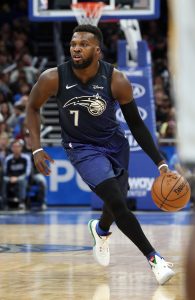After winning just 22 games in 2017/18, the Grizzlies entered the summer as a capped-out team with limited resources to make major upgrades. Still, the club made use of its lottery pick, the mid-level exception, and various trade assets in an effort to improve its roster and return to playoff contention for 2018/19.
Grizzlies executive vice president of basketball operations John Hollinger spoke to Peter Edmiston of The Memphis Commercial Appeal about the club’s offseason, addressing Memphis’ major personnel moves, the decision not to bring back Tyreke Evans, the team’s proximity to the tax line, and more.
The conversation is worth checking out in full, particularly for Grizzlies fans, but here are a few highlights from Hollinger:
On whether the Grizzlies’ achieved their primary offseason goals:
“People have this idea that you come in with a plan, when you really need about 20 or 30 different plans that are contingent on other things that may or may not happen. I’d say the outcome here was close to our best- or better-case scenario. We were able to get a player we really wanted (Jaren Jackson Jr.) with our pick, using our mid-level exception to get what we see as a long-term piece in Kyle Anderson. Those were two huge things for us, not just for the present but for the future of this team. I guess it’s too early to say whether we nailed those or not, but we feel pretty good about the outcomes we had from that. Those were probably the primary goals and we achieved them.”
On the Grizzlies’ decision not to trade Tyreke Evans at last year’s deadline because they planned to re-sign him:
“Hindsight is always 20-20. You make the best decision you can with the information you have at the time. We had no idea that MarShon Brooks was going to emerge as a potential bench scorer for us that could make it easier for us to go in a different direction and go after someone like Kyle with our mid-level.
“I look at it like it was a stock option. We knew there wasn’t a 100% chance we were going to be able to re-sign Tyreke. There was some percentage chance we had to estimate based on the factors in the market, and we had to weigh that relative to the return that we were looking at on trading him, which was likely to be pretty paltry.
“When you’re dealing with second-round picks in the 50s that end up on playoff teams, now you’re getting into a scenario where there’s been six rotation players picked in the last 10 years, so you’re getting into pretty low odds you can get anything out of that.”
On the impression Brooks made on the Grizzlies late in the 2017/18 season:
“There’s obviously an eye test element to this, because we’ve all seen people do things in April that aren’t necessarily replicable in November. But at the same time, these weren’t garbage games for our opponents on most nights. Minnesota’s fighting for a playoff spot, and he’s basically our go-to guy in the fourth quarter to help win that game. Utah, at Utah, is playing for seeding with their best players, an elite defensive team, and he’s getting buckets.”
On the Grizzlies’ team salary currently sitting narrowly below the tax line:
“We’re comfortable where we’re at, there may be one or two small moves still coming as we optimize things a bit, but I don’t really see any haymakers coming. I think we’re pretty happy with how our offseason has gone, and the types of guys we’ve brought in. The luxury tax dance is one I’m familiar with — this is my seventh season, and in six of them we’ve danced right up to the line, so this is not unfamiliar territory.”
